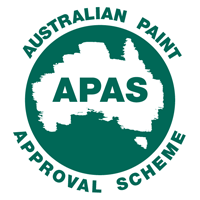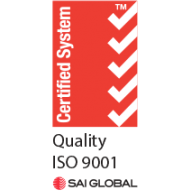Dr. Stephen Bailey 4-11-21
Rheology is the underlying study involved with the flow or deformation of matter when exposed to external forces, and in the context of chemical coatings, primarily relates to the flow of a liquid or semi-solid.
This is in contrast to viscosity, a branch of rheology, specialized in the study of matters resistance to flow, with a relationship to time and temperature. In the context of a coating science, this could be seen as the resistance to friction of an object moving through the solvents and polymers (with a steady strain rate) which constitute the paint system. Rheology and viscosity are separated by viscosity being the measure of the resistance to flow. Viscosity is also expressed as the relationship between shear rate and shear stress, being the shear stress divided by the shear rate.
![]()
shear stress (τ) could be defined as the measurement of the force (F) applied to the area (A) of interest (such as the layer of paint under the brush or stirrer, figure 1). The shear stress applied to the area induces deformation, which is defined as the shear strain of the material.

shear rate could be defined as the measure of velocity gradient created which depends on the speed (V) the top layer is moved and the thickness (T) of the layers between the surface and the substrate (figure 2). The velocity could also be seen as the change of strain (speed of stirring or brushing in a paint system) with time.

In terms of coating chemistry, the rheology can influence properties which can have significant effects on the overall coating system. These include but are not limited to:
- transfer/transportation of the resin and paint.
- pigment dispersion
- application of the paint
- film formation and film coalescence
- storage and long-term stability (soft and hard settling of pigments and fillers
In terms of the properties of the final paint system, many of these are influenced by rheology, including:
- flow and levelling (for self levelling verses textured systems)
- sag resistance and vertical wall application

- paint application type (spray, roll, or brush)
- film thickness
- adhesion
- opacity
From a chemical level, viscosity can be the result of molecular interactions including covalent and ionic bonding, coordination complexes (both primary valencies and secondary (ligands) valencies), and hydrogen bonding. When a coating system begins to cure (or react under the specified conditions), such as a 2-pack epoxy/polyamine system (figure 3). Once the amine hardener encounters the epoxy and reacts via nucleophilic ring opening, the resulting polymeric network has an overall increase in viscosity due to the increase in both covalent and hydrogen bonding of the system.

A typical example of a thickener used in coating systems would be cellulose-derived thickeners. These thickeners take advantage of the high polarity and hydrogen bonding of the cellulose network to provide increased viscosity to the overall paint system (figure 4).

In addition to molecular interactions, there are many other factors determining the rheology of a paint system, these include:
- the resin solubility and compatibility with other components like resins, fillers, additives, etc.
- the solvent content and the chemical properties such as polarity
- pigments and fillers
- additives (wetting, dispersing, anti-settling, etc.)
These factors can be used to control the overall rheology of the paint system without negatively effecting the desirable properties of the final cured coating.
In conclusion, rheology describes the overall behavior of the system when force is applied and is directly related to the properties of the coating system. Different types of paints will be exposed to specific shear rates during the production and manufacturing processes, so there is no universal optimal rheology for any application, and each need to be designed for the specific coating in mind.
References
Dimetry, B. G. “The Relationship between Rheology, Application Method, and Final Coating Structure” (2001). Electronic Theses and Dissertations. 252.
Harte, C. H. “Protective Coatings: Fundamentals of Chemistry and Composition” (1994). Technology Publishing Company.
Waldie, J. M. et. al. “Surface Coatings Volume 1: Raw Materials and their Usage” (1974). Macarthur Press.
Bianchini, G. et. al. “Waterborne and Solvent Based Surface Coatings Resins and their Applications Volume II: Waterborne and Solvent Based Epoxies and their end user Applications” (1996). SITA Technology Limited.
Chemical Dynamics, LLC. “Better Performance through Rheology”; https://chemicaldynamics.net/2019/09/18/better-performance-through-rheology, last edited 2019.





